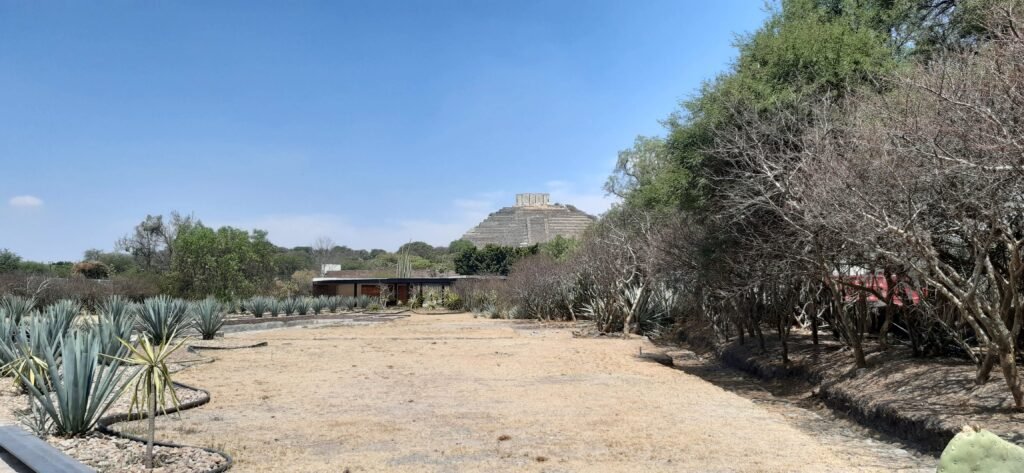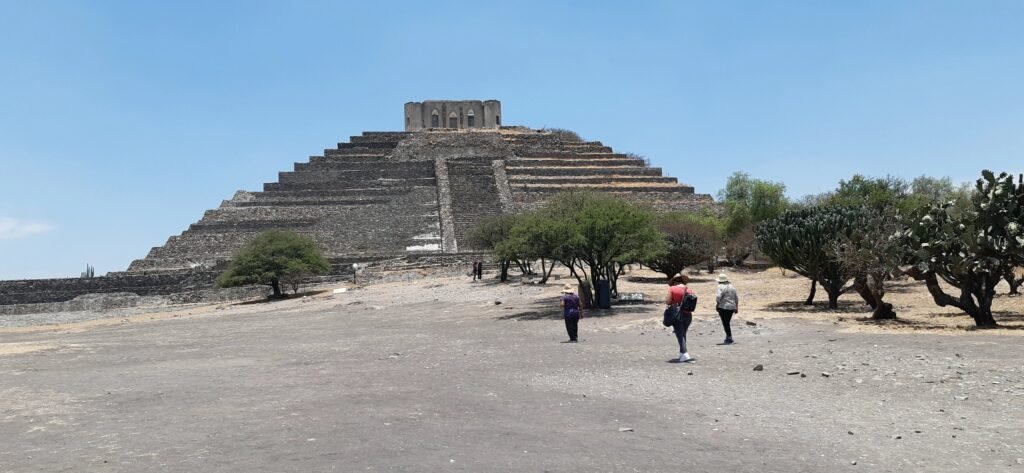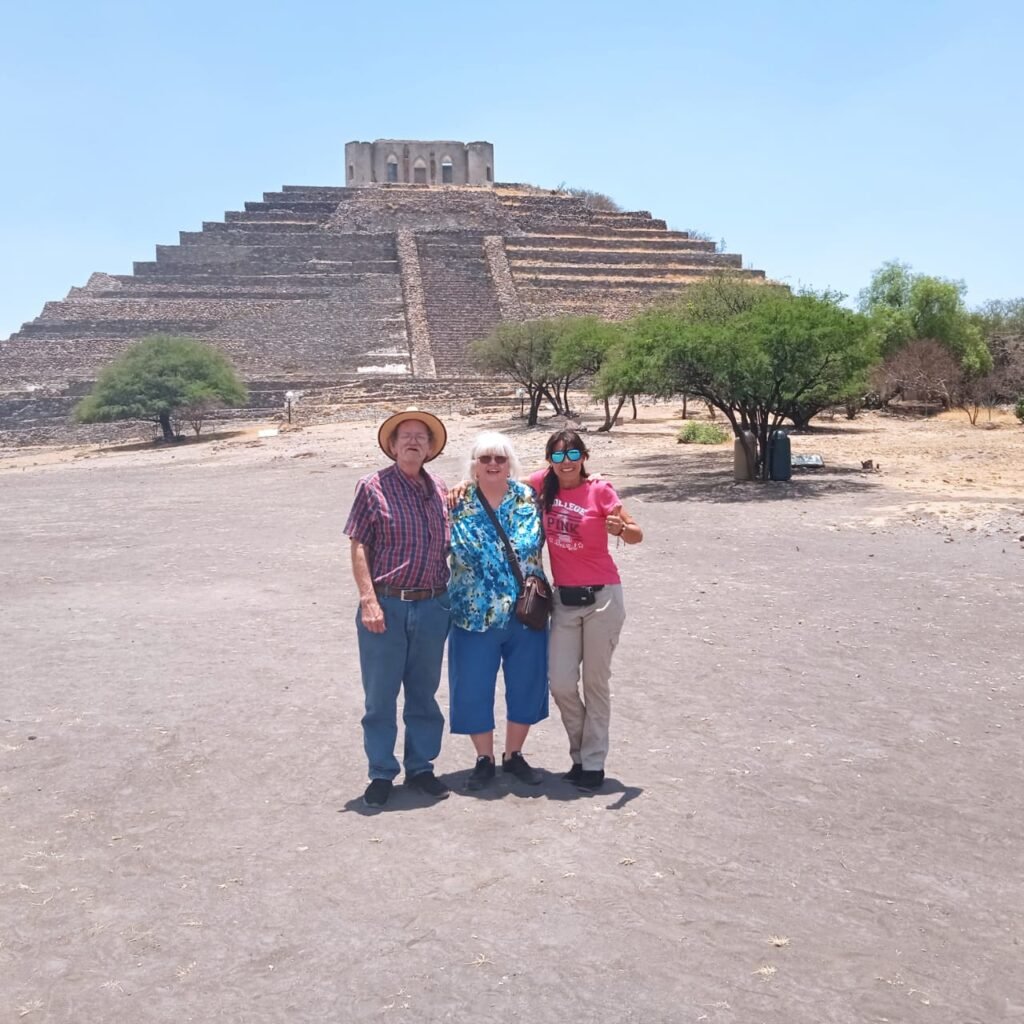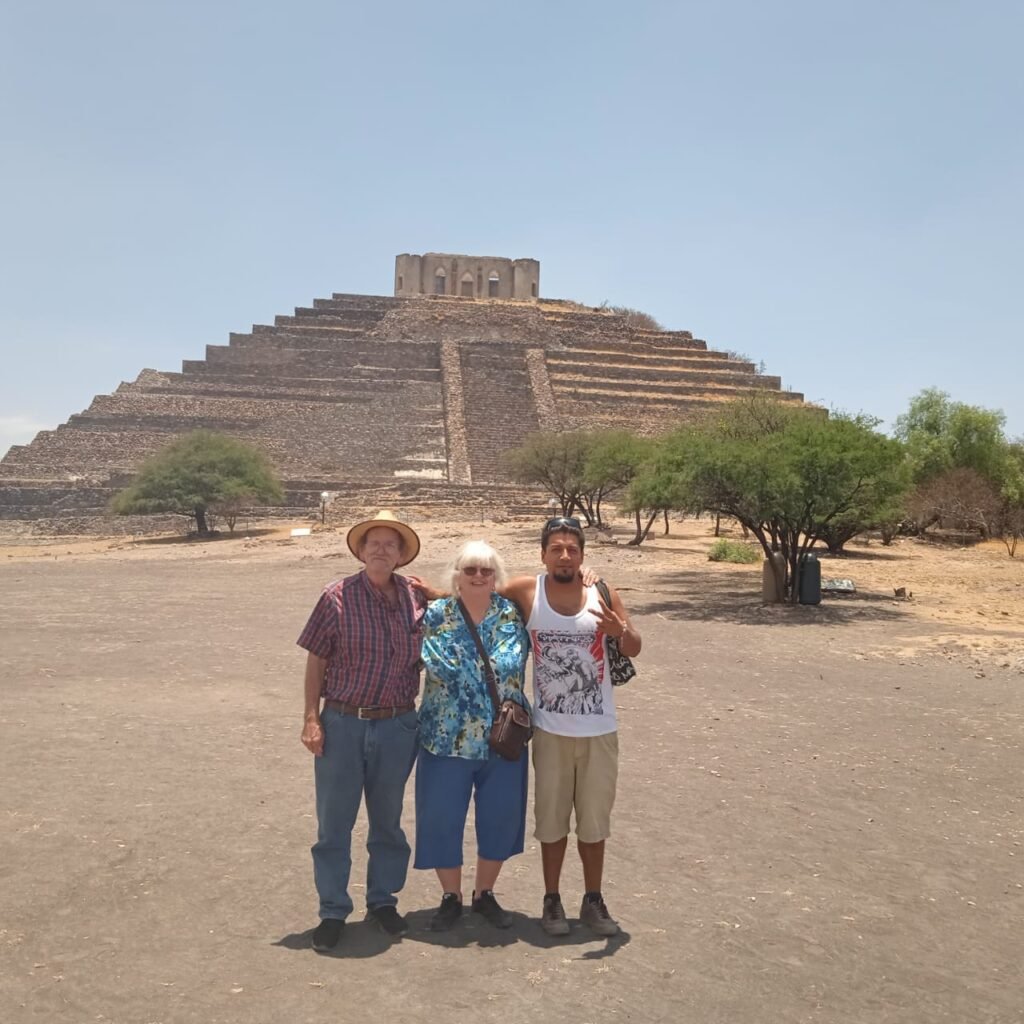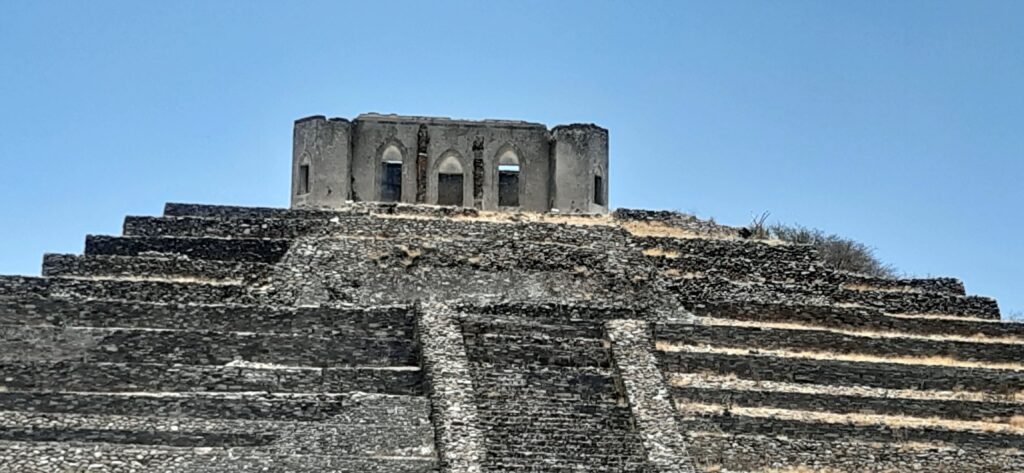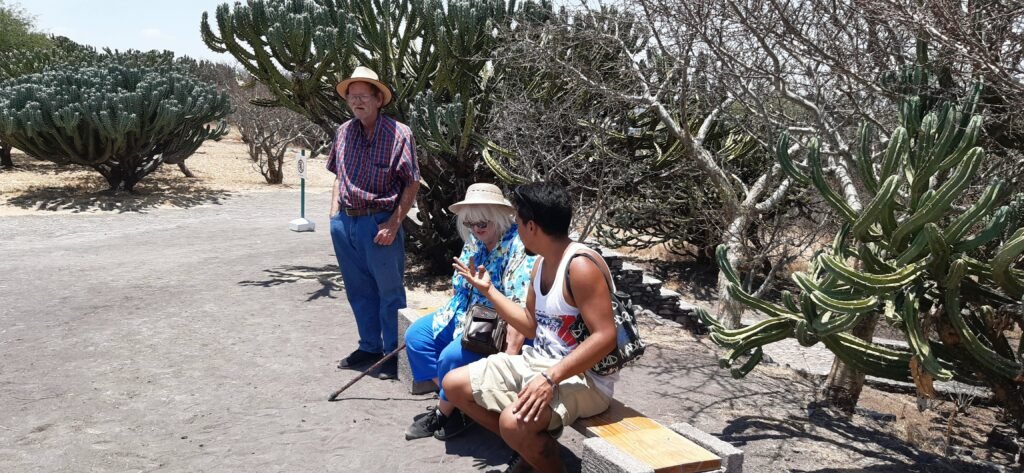We visited this pyramid, also called El Cerrito, which is near Santiago de Querétaro in a little town called Corregidora. It was actually given with land to a hacienda owner at one point. and before being rediscovered, part of it had collapsed, and the entire thing was overgrown with vegetation. In 1941 it was found again but excavating didn’t start until 1995.
The First phase was built by the Chupícuaro culture somewhere around 300 bce and consisted of a ceremonial center and pyramid, where engraved stones and a vertical wall were found , with an 640 square meter basement. It combined two types of unique construction, the sunken patios and rooms with columns. The main deity worshipped there is believed to have been a powerful female who brought fertility to the people and the fields. About 400 CE, it became a cultural center used by many tribes.
The Toltec culture used it from 900 to 1200 CE, where it became one of the most important Toltec site, where it was thought their gods resided and gave advice to their people. It had additions built somewhere around 900 to 1000 The collapse of the pyramid and the Chupícuaro occurred at the same time as the fall of the Toltecs in 1168, and was probably caused by a environmental issues and the invasions of the Chichimecas, from the north that came to dominate the area . During that period, it became a regional shrine.
In the early 16th century, it was rebuilt again and had stucco with small altars built in. When the Spanish arrived, it was still populated by Chichimecas but also with the Otomi and Purépecha. The pyramid would never regain its importance it had with the Toltec, but it was used as a sacred space open to all the prehispanic tribes until the late the 17th century. The Franciscan religious order built the temple at the top of the pyramid, and placed an image of Mary at the site, when the spanish were destroying all of the aztec pyramids and temples.
right click on photo for options
